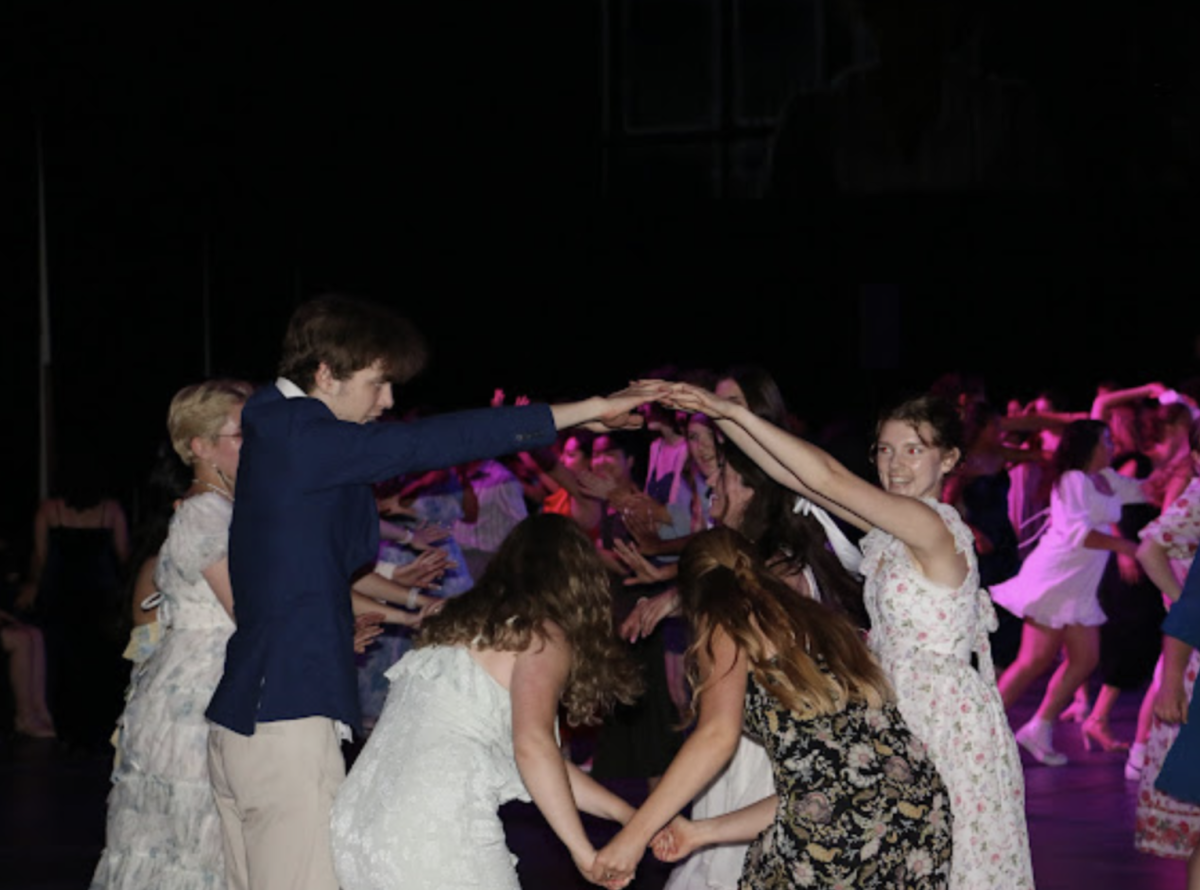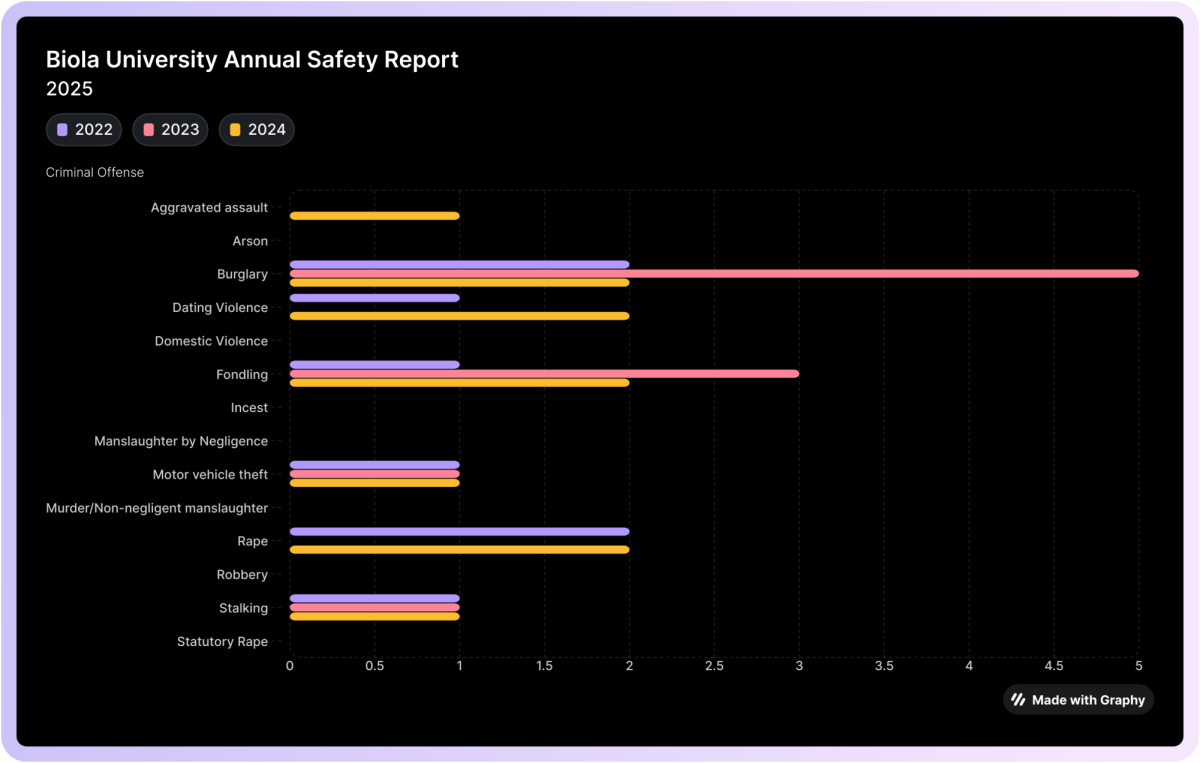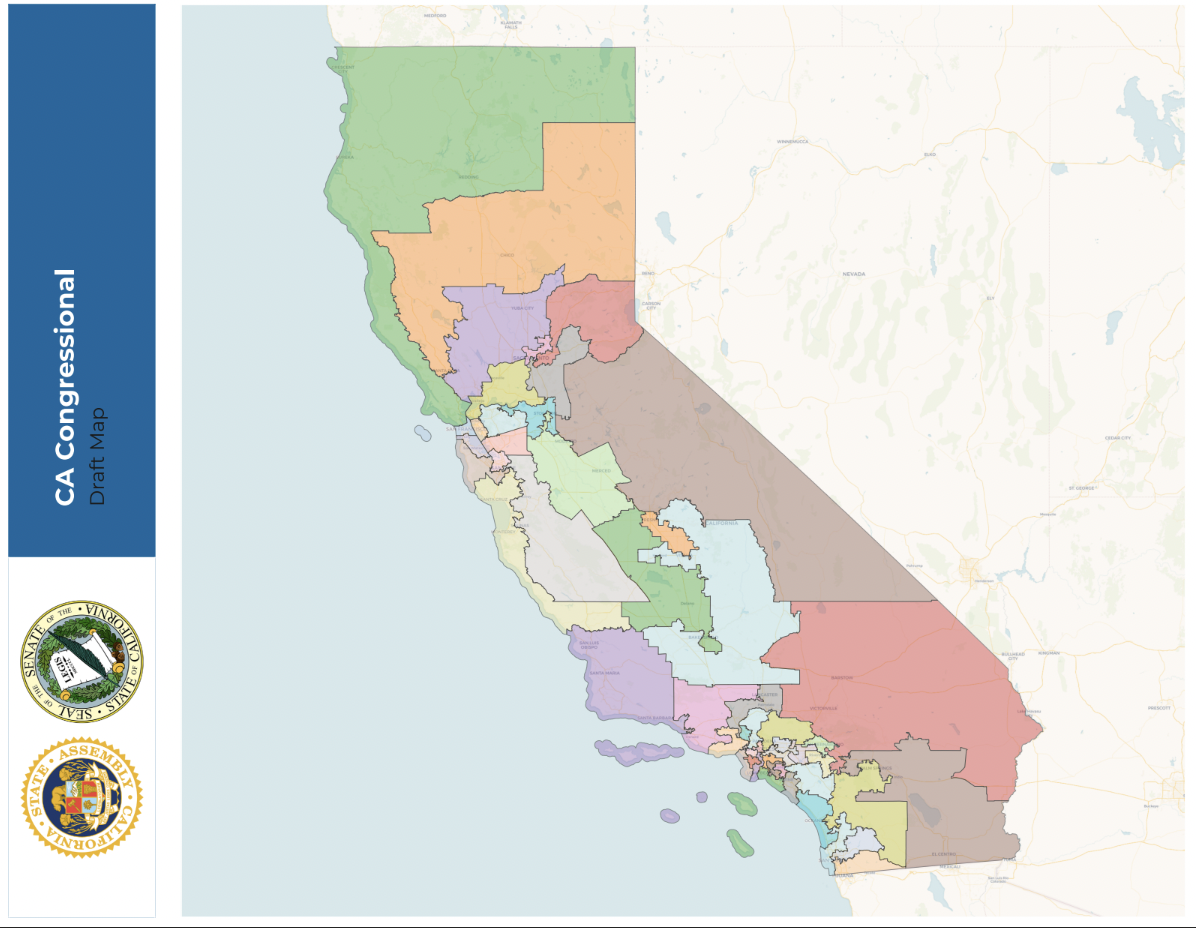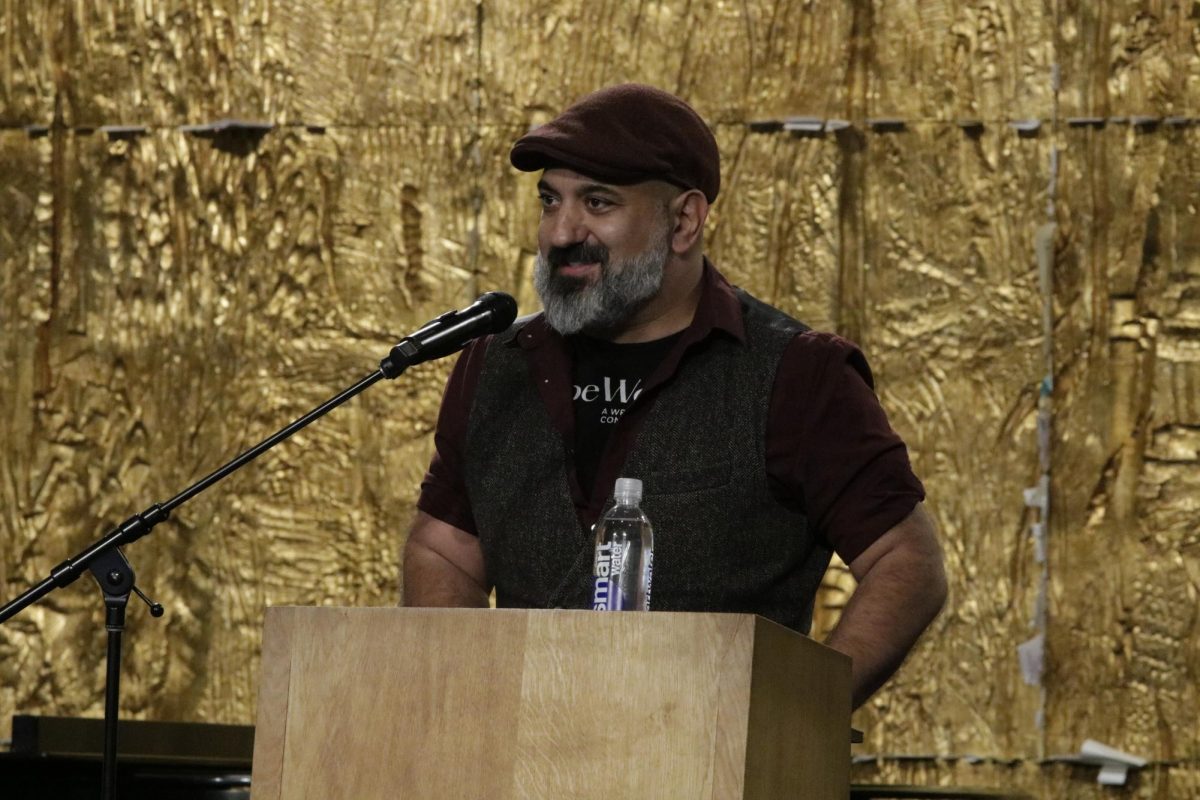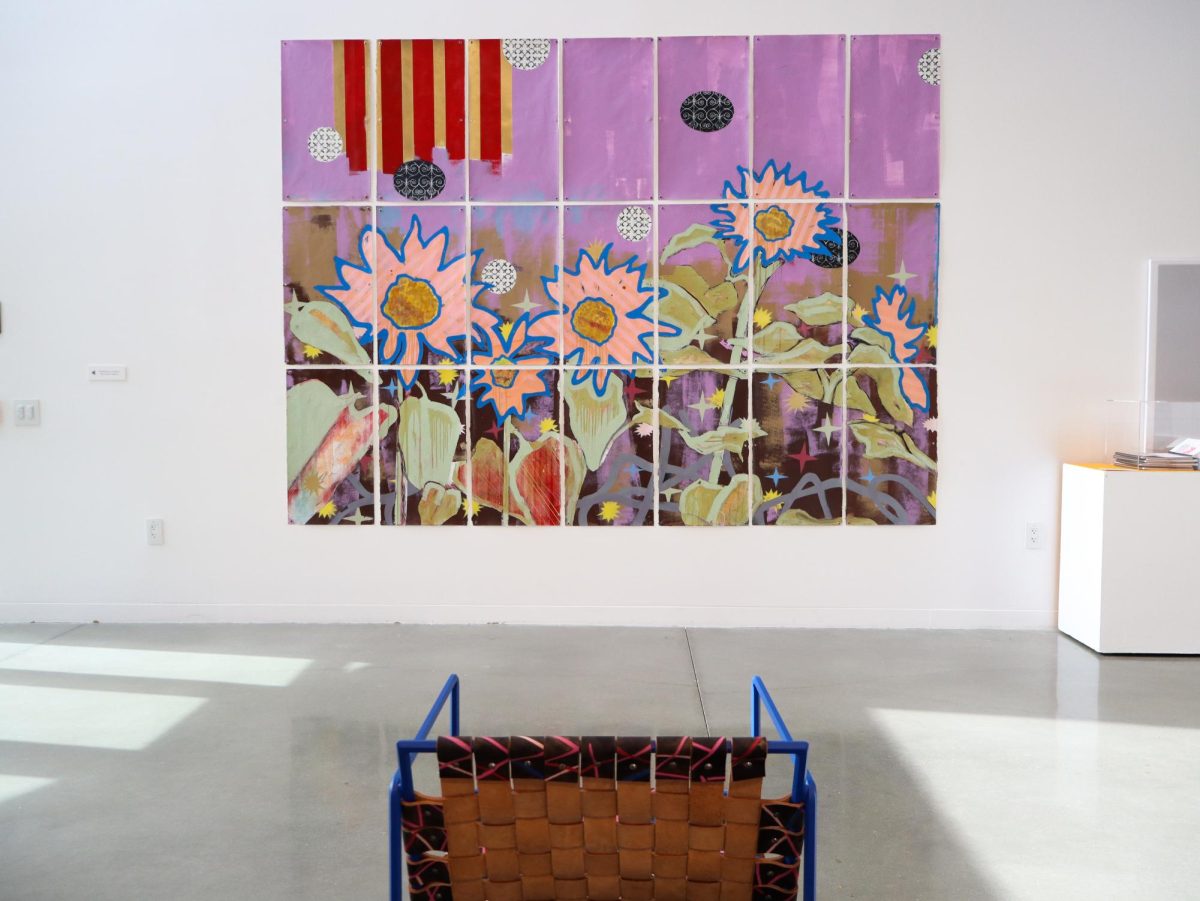As the afternoon sun waned and the evening clouds spread across the dimming sky, the crowds of Biola students gathered around the doors of Biola’s Chase Gymnasium. The suits were ironed, and the gowns glowed in the La Mirada moonlight. The decorations were set—lights and music swelling. The clock struck 7:30 p.m., and the Spring Formal commenced.
But, an event like this cannot come about spontaneously. It requires the hands of many dedicated, committed individuals at the helm to steer it into fruition.
Traditionally, Biola’s Student Missionary Union (SMU) and Student Government Association (SGA) plan the Winter and Spring Formals, respectively. This year, Ellie Monwai, SGA vice president of administration, along with four other SGA members put together the Spring Formal.
“My heart behind putting [the Spring Formal] on was to give a gift of a fun night for the entire student body to enjoy,” said Monwai, SGA Spring Formal Committee Lead.
Monwai also discussed the unique benefits of having SGA, a student-led organization that advocates for the welfare and interests of the student body, plan the Spring Formal.
“SGA has a unique reach to the entire student body, which is cool because we can get a pulse from a lot of different areas on campus to serve as many students as we can,” said Monwai.
Hope Hall Senator Kaitlyn Stezter, a member of the Committee, offered some more details on the planning process behind the event. According to Stetzer and Monwai, Biola students were given full control over choosing the theme for the formal. The Spring Formal Committee met and developed a plethora of possible options for dance themes. Biola students had the opportunity to vote for one of three—”Beauty and the Beast,” “Once Upon a Time,” and the chosen “Pride and Prejudice,” to their respective weekly SGA Hours events.
“We loved the outfits, color scheme and music of ‘Pride and Prejudice,’ and we were super excited to incorporate them into the formal,” said Stetzer.
Monwai also discussed some unique challenges that arose in planning the formal, as well as additional efforts that were made to remedy past complaints with the annual event. Most notably, Monwai’s biggest concern was ensuring that Biola students had enough water.
“I know that sounds kind of silly,” said Monwai. “Historically, water has been insufficient, and people always need water. So out of all the refreshments, water was absolutely the most important.”
Monwai also acknowledged the peculiar decision to schedule the formal the day after Biola’s annual Mock Rock competition. According to Monwai, this was simply a result of logistical concerns with the student body and the Spring Formal committee.
“I know a lot of people were confused by the fact that [the formal] was the same weekend as Mock Rock. That was not what I wanted either, but there was literally no other day that worked for everyone involved,” said Monwai. “I was coordinating with 5 different groups of people—and we went back and forth on a lot of factors and dates. The 12th ended up being the only day that didn’t already have another major event.”
Another major challenge for Monwai’s team would involve the presence — or lack thereof — of a vital package for the drinks stand.
“There was a package we ordered about a week and a half before the dance that was a big part of our drink spread,” said Monwai. “But three days before the dance I hadn’t heard if that package had shipped yet. We ended up going to two different FedEx shipping facilities to hunt down the package. And we found it.”
Aside from the logistical conundrums, missing packages and the assured presence of enough water bottles, Monwai also prioritized a major Christian integration into the event — one built on the freedom of the Gospel message, expressed through the freedom of dance.
“I think the biggest thing we considered was the idea that the Gospel frees us — not to live by a bunch of rules but by grace,” said Monwai. “I think from that, fun is actually really biblical and it is actually worshipful for us to dance with the bodies that God gave us.”
Most notably, students were invited to participate in a series of organized dances.
“We brought in someone to teach group/partner dances, and it was a blast. Hundreds of people participated, which made for a really fun (and complicated) learning process,” said Stetzer.
Historically, Biola University has placed strict policies against the presence of unchoreographed dancing on the La Mirada campus. Currently, the student handbook reflects a more tolerant view of dancing, though the concern is still present. The current handbook reads as follows: “Choreographed and/or performance dancing is allowed both on and off campus. Each member of the Biola community is expected to exercise individual judgment, and with recognition that some dancing is inappropriate.”
Monwai and the Committee were also aware of these concerns while planning the formal.
“Obviously all of that can be perverted,” said Monwai. “But I don’t think that’s a sufficient reason to not dance or have fun as an act of worship.”
Additionally, for Stetzer, the dance was not only a time to celebrate in community, but also a time to lift off the weight of classwork and looming deadlines.
“It is essential for Christians to live in and celebrate community,” said Stetzer. “We wanted to provide a space to foster that community, while helping stressed out college students relax and have some fun.”
The annual Spring Formal was held on Saturday, April 12, in Chase Gymnasium. Over 400 Biola students were in attendance.

